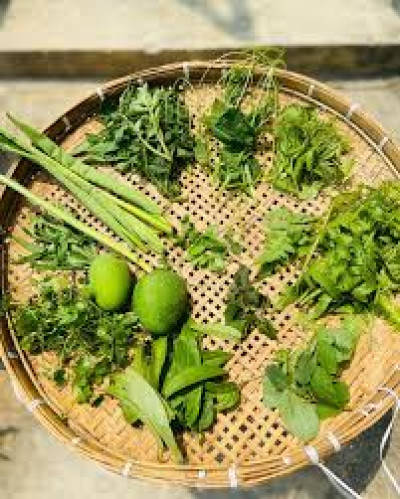Assamese Green Leafy Vegetables (xaak) Guide: Health Benefits, Traditional Recipes & Cooking Tips



Description: Edible fern leaves, tender with a slightly tangy flavor.
Benefits: Rich in vitamins A & C, minerals, and antioxidants.
Cooking Tip: Typically stir-fried with mustard oil, garlic, and green chilies or cooked with potatoes.
Description: Mustard greens with a distinct mustardy flavor.
Benefits: High in vitamins A, C, K, and heart-healthy nutrients.
Cooking Tip: Cook with potatoes, pork, or fish for rich Assamese flavors.
Description: Mildly earthy green leaves, locally popular.
Benefits: Rich in fiber, iron, and calcium.
Cooking Tip: Simple sauté with garlic and mustard oil or prepare as mixed xaak curry.
Description: Seasonal green leafy vegetable with a unique taste.
Benefits: Packed with vitamins and minerals, great for digestion.
Cooking Tip: Cooked with tomatoes or potatoes and seasoned with mustard oil.
Description: Sour-tasting leafy vegetable used in Assamese cuisine.
Benefits: High in vitamin C and antioxidants.
Cooking Tip: Often prepared as sour curry or chutney with fish or vegetables.
Description: Slightly bitter green leaves with a refreshing flavor.
Benefits: Rich in vitamins A and C, minerals, and dietary fiber.
Cooking Tip: Cooked simply with garlic and mustard oil or combined in mixed xaak curries.
Always wash xaak leaves thoroughly to remove grit.
Use mustard oil for authentic Assamese flavor and aroma.
Light sautéing or slow cooking helps retain nutrients and flavor.
Combine with simple ingredients like potatoes, tomatoes, garlic, and chilies.
Serve hot with plain steamed rice and accompaniments like fish or pork.
Nutrient Dense: Loaded with essential vitamins and minerals.
Low Calorie: Perfect for weight management and healthy living.
Digestive Health: High fiber promotes good digestion.
Cultural Experience: Enjoy the authentic taste and heritage of Assam.
Assamese green leafy vegetables or xaak are nutritional powerhouses that also bring authentic, earthy flavors to your plate. Whether it’s Dhekia Xaak’s delicate taste or the tangy punch of Dupor Tenga Paat, these traditional greens offer versatile cooking options and health benefits.
Try incorporating these xaak varieties into your meals to experience Assam’s rich culinary heritage while boosting your health naturally.